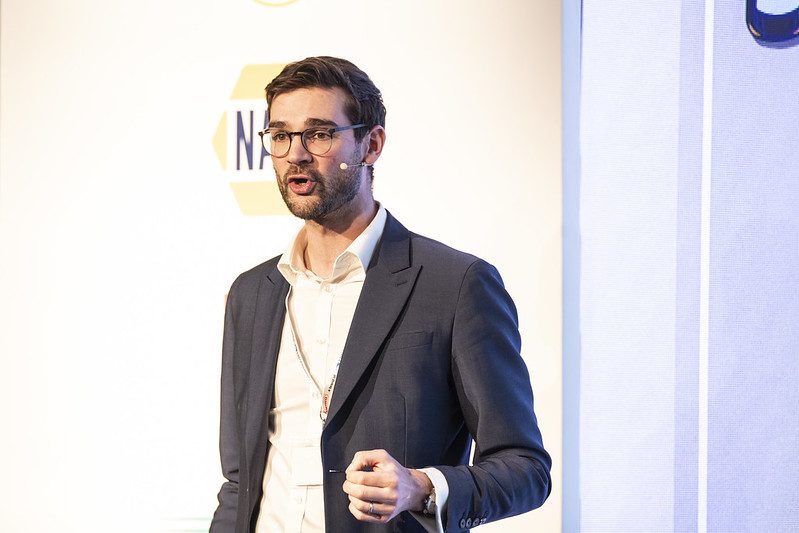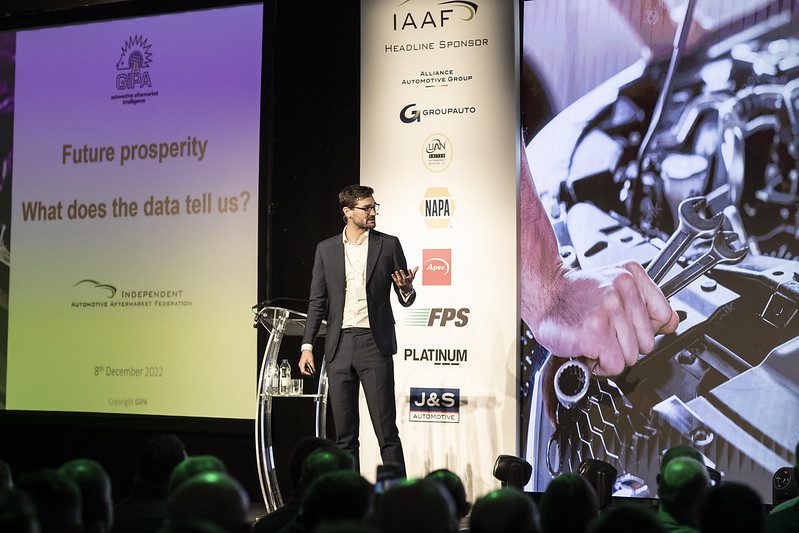The automotive industry as a whole is changing, and the aftermarket can benefit from this. But at the same time, it must be aware of change itself, especially as some external market factors put pressure on the industry.
At the recent IAAF Conference, Quentin Le Hetet, head of GIPA in the UK, presented the current trends the organisation is finding, having trawled the numbers over the last 12 months. They have found that the independent aftermarket is a very different place to what it was prior to the COVID-19 pandemic.
New-car market is losing out
Firstly, Le Hetet highlighted that new-vehicle registrations in the UK are down by around 33% compared to 2019, the last year before COVID-19 massively disrupted the market. This equates to around 1.6 million cars being registered this year, compared to 2.3 million in 2019.

“That’s 700,000 vehicles that will not be registered this year,” Quentin Le Hetet stated. “The problem is that this is not the first year that we have registered around 1.6 million vehicles, it is the third year. That means there are around 2.1 million cars that should be on the roads, that are not. This means the UK car parc is aging and it is not being renewed as often as it should be.”
With COVID-19 hitting budgets, especially those of businesses, car sales were always going to suffer throughout the pandemic. However, the issue of semiconductor supplies has also hit the new-car industry hard. It is important to note that sales and registrations are two different things. Registrations tracks the delivery of vehicles, and with some customers waiting up to a year for their new model, sales placed this year could be pushed into 2023.
Le Hetet pointed out that the issue of falling registrations is not a UK-only phenomenon. Other big markets in Europe, including France, Spain, Germany and Italy, are suffering too, with numbers around a third lower than figures from 2019.
The ageing UK car parc
But the UK car parc, while remaining relatively stable in terms of numbers, has aged. Quentin Le Hetet highlighted that the UK has, for the last 20 years, been the country with the lowest age car parc out of the big five European markets, and in 2019 the average age of a vehicle in the country was 7.9-years old.
“By the end of 2024, we expect it to be 9.5-years old, and by the end of 2025, this will rise to an average of 9.7-years old. We do not believe that we will recover to two million vehicle registrations by that time, that is our forecast,” Quentin Le Hetet commented.
That means that in a seven-year period, the average age of a car will have increased by two years, showing how a lack of new-car sales is impacting the automotive market. Yet it also suggests that there is an opportunity for the independent aftermarket to benefit.
According to Le Hetet, by that time, 85% of the UK car parc will be three-years-old or older. Back in 2017, when 2.7 million cars were registered, the number of vehicles aged zero to four years was 38%, while in 2024 it will be 24%, a 14% decrease in seven years.

“It is actually quite positive for the independent aftermarket, where most cars enter at three-years-old,” added Quentin Le Hetet. “If you look at the 85%, then this means all these cars will need an MOT once a year, so they will need to enter a workshop once a year, no matter how many, or how few, miles it covers annually.
“However, it may also mean that road safety decreases, the older the car parc gets,” he continued. “In 2021, for all three-year plus vehicles, the MOT failure rate was 32.4%. If we look forward with the older parc at an average of 9.7 years, this could increase to 34.3%.”
This means that there will be more repairs for independent garages to carry out, meaning the market should prosper from older vehicles. Yet it also means that many more vehicles may be carrying defects that are not detected if drivers do not check them often, increasing the number of dangerous vehicles on UK roads.
Skills gap becoming evident
There are challenges, however. Le Hetet highlighted mileage recovery as one area that is changing. GIPA saw a big decrease in miles covered during the height of the COVID-19 pandemic, as people worked from home and limited their commuting and travel.
As Quentin Le Hetet commented, the average mileage covered has recovered significantly, although not back to 2019 levels as more people work flexibly and limit travel due to fuel costs. Still, it is great news for the industry, as this means more wear and tear on vehicles that will need repairing.
A bigger challenge that is starting to show through to the aftermarket is a skills shortage. There is almost a lack of interest in the sector, which in itself is not very diverse. Le Hetet highlighted the struggle by revealing the results of a recent GIPA survey.
“We conducted research with workshops in September of this year [2022], and 51% said that their key challenge right now is finding qualified staff. Further information from the ONS stated that 56% of automotive businesses are struggling to fill vacancies, with minimal applications.”
It is not just the automotive industry that is suffering, but many other industries are struggling to find key staff, which means many will be working against each other to gain and train key staff. As Le Hetet stated, it is an issue that will require a long-term imitative to solve, making the market more attractive to school leavers and students.
Parts and electrification
Another challenge, according to Quentin Le Hetet, is the problem around parts supplies. GIPA has been tracking this issue since the beginning of 2021, and in Q1 of that year, over 50% of independent garages, and 65% of dealers, stated they have parts supply issues.
“Franchised dealers have been over 60% of complaints every quarter since then,” Le Hetet commented. “For the independent aftermarket this is an opportunity, as they have the ability to get parts better, according to the survey. Therefore, supplying parts into the independent sector will be more important than ever, and for suppliers, a need to create business relationships.”

The biggest challenge is that of electrification. According to GIPA, 57% of electric vehicle drivers stated they have changed the workshop they use since they bought their vehicle, and 80% of workshop entries of these vehicles are going to franchised dealers.
“There is a demand that is building up as registrations of battery-electric vehicles increases,” added Le Hetet. “Currently, 15% of registrations are battery-electric, and we believe that by the beginning of 2026, 7% of all cars, not just registrations, will be powered by batteries, growing to 27% by the beginning of 2030.”
Customers stated that the reason they changed workshops was because they wanted to use a specialised EV garage, that had the knowledge and tools to work on their vehicles.
Therefore, there is a real need for the automotive aftermarket to ensure it is ready to deal with the growth in electric vehicles, through training of technicians to the development of parts.
Overall, the aftermarket has challenges ahead, but many of these challenges can create opportunities, as long as garage owners, technicians, and parts suppliers, begin to look to the future of the automotive industry as a whole.




You must be logged in to post a comment.